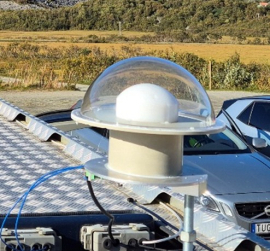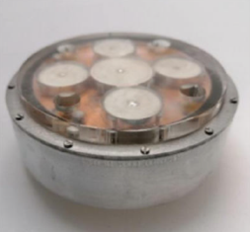Filter By
119 - Dual Polarization Arrays for compact resilient GNSS Receivers
The ability of exploiting the spatial dimensions has made array antennas valuable for many applications, e.g., multipath and interference mitigation, spatial diversity, and localization. Consequently, over the past years, array antennas, i.e. Controlled Receptions Pattern Antennas (CRPA), have been deployed with GNSS receivers either to provide a spatial filter (null steering techniques) or to…
118 - On demand PNT services during crisis
The success of satellite-enabled PNT applications is accompanied by a growing dependency of our society and economy on the availability of GNSS, which has motivated R&D, demonstration as well as deployment of so-called Alternative PNT systems (APNT).
This dependency extends to GNSS augmentation systems and PNT capabilities relying on local terrestrial infrastructures which can be exposed to…
117 - Resilience Techniques and Algorithms for GNSS Space Receivers in Interference, Jamming and Spoofing Conditions
The threats of ground-based interference, jamming, and spoofing impacting terrestrial and aviation receivers are well recognised by the navigation community, driving many system- level and user-level mitigation studies and technology developments. However, sufficient attention has not yet been given to the impact and mitigation of these threats on GNSS space receivers in LEO (commercial and…
116 - Design of CRPAs for aviation and high-accuracy services
Jamming and spoofing of GNSS are a major concern. A controlled reception pattern antenna (CRPA) is one of the most powerful technologies to mitigate jamming and spoofing. As a result, it is attractive to start using CRPAs for several applications, including aviation and high-accuracy services. However, the use of a specific CRPA for specific applications requires a detailed evaluation of the…
112 - Development of a GNSS Receiver Size Weight & Power Model
In recent years, the design of GNSS receivers has become increasingly complex due to ongoing developments in signal structures and the growing variety of carrier frequencies, bandwidths, waveforms, chipping, and data rates. Based on these parameters and on the advancements in the different application domains, no effective, comprehensive tool currently exists to evaluate the best trade-off in…
110 - User Equipment Platform for Positioning with 5G/6G Non-Terrestrial Networks
The future 5G and 6G non-terrestrial networks (NTN) will offer continuous and ubiquitous coverage, serving predominantly terrestrial users in remote and underserved areas. The latest 3GPP releases imply that the user equipment (UE) must be equipped with the Global Navigation Satellite System (GNSS) receiver determining its position, velocity, and time (PVT) to be able to connect to NTN. To…
109 - 5G Localisation for Safety of Life Applications in Rail
Safe Localisation of railway vehicles is necessary to allow train control systems to operate. Today this is done within the European Train Control System (ETCS) by using fixed location tags called Eurobalises and odometry sensors.
While Eurobalises typically are safe, fairly accurate and robust, they impose high costs for installation and maintenance on the infrastructure operator and only…
107 - Ultra high spatial resolution GNSS receiver for automotive industry
The ability of exploiting the spatial dimensions has allowed array antennas to be exploited in various applications. Over the past years, array antennas have been deployed in GNSS receivers either to provide a spatial filter or to improve the signal-to-noise ratio (SNR) using beamforming techniques.
To achieve a high spatial resolution, a large array antenna aperture should be used. The…
105 - Hybrid black-white-modelling estimation and machine learning algorithms for PNT engines
The application of machine learning (based on “black-box” modelling) is of interest in problems that are difficult to solve based on traditional (optimal) estimators for simple models (“white-box” modelling). Black-box modelling is difficult to be explained and understood (i.e., difficult to understand what to expect in unknown or new situations), involve high computation complexity, and…
103 - Precise and Stable Navigation with Quantum Accelerometer
Navigation systems that rely on Inertial Sensors are prone to drift and inaccuracies over time, affecting their accuracy, reliability, and autonomy, particularly in challenging scenarios where GNSS signals and/or external reference points availability is limited or strongly impacted.
Quantum accelerometers enable high-precision navigation with long autonomy, effective fault detection in case of…










